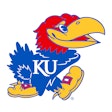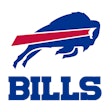The sports industry continues to grow exponentially in the United States, and with that growth comes an increased interest for local and national businesses and organizations to affiliate with sports teams through sponsorship relationships. As this trend continues, the nature of the relationship between a sports property and a business will continue to evolve. For years, businesses were satisfied with simply having their name associated with a sports property, but today, businesses are demanding more return on the sponsorship relationship. They want to know how the sponsorship relationship will benefit their brand.
As such, it is important for sports properties to understand this shift in dynamics surrounding the sponsorship relationship. When entering into sponsorship contracts with a business, sports properties should keep the following considerations in mind.
QUANTIFYING THE RELATIONSHIP
Traditional sponsorship packages can include components such as radio, print, team publications (e.g. programs) and stadium signage. In order to effectively pitch these components to sponsors, sports properties need to be able to quantify the impact they will have. Often the appearance of a business’s name or logo as related to the sports property is referred to as an “impression.” Thus, businesses are often curious exactly how many impressions occur through the sports property’s publication, how many impressions result from gameday signage, or how many impressions occur from a radio spot. Not only should sports properties track impressions, but they should be prepared to explain, in detail, the method by which the impressions are tracked.
For example, one agent who represents professional golfers tracks how often his golfers’ hats, shirt sleeves or golf bags appear on television during tournaments. A business is more likely to sponsor an athlete when the business is told its name or logo is likely to appear a certain number of times on television throughout the life of the sponsorship agreement. When the agent or sports property is actually armed with impression statistics, the sponsorship price tag becomes even easier to justify.
A CUSTOMIZED APPROACH
The days of one-size-fits-all sponsorship packages are long gone. Today, businesses approach sports property sponsorships with the intent of making the sponsorship relationship fit within an overall marketing and branding strategy. Given this trend, sports properties have to be prepared to tailor their sponsorship packages to the potential sponsor.
To create an effective and individualized sponsorship package, sports properties should strongly consider researching the business’s current position within other marketing segments. This research may reveal that the business recently began targeting a certain demographic in order to expand its brand. This information can then be leveraged by explaining how the sponsorship relationship can expand a potential sponsor’s brand footprint within that demographic. Offering sponsorship components that create a unique opportunity to drive business is far more attractive than some sort of generic offer.
Additionally, some sports properties are fortunate enough to have venues that host other events, such as concerts, charity events or other sporting events. Many businesses are often interested in tickets or suites to these events as a way to reward employees or entertain clients. Sports properties should consider offering sponsorship packages that allow the sponsor to receive tickets to the other events, or the option to purchase tickets at a reduced price. This is a great way for the sports property to expand its sponsorship inventory beyond the events directly associated with the sports property.
THE SPONSORSHIP CONTRACT
Like any other business relationship, the relationship between the business and the sports property should be in writing, regardless of the value of the package. Verbal contracts are generally enforceable, but without a written contract, “he said, she said” situations can quickly arise.
For example, the sponsor may think that its public address announcement is supposed to occur between every quarter of the football game, but the sports property only made the announcement between the first and second quarter. If the contract is in writing and specifically addresses public address announcements, then the sponsor will know what to expect.
Most of the time, the sports property drafts the contract and should utilize the drafting process to protect itself. The contract should clearly define the obligations of each party, what the sponsor will receive, how impressions (if applicable) will be measured, and payment terms and dates. The contract should be simple, clear and easy to understand. Consider a sponsorship contract that names the sponsor as the exclusive telecommunications sponsor of the sports property, for example, but does not define telecommunications. This sponsor may think it is the exclusive sponsor for radio, as well as cellular and landline phones. In contrast, telecommunications to the sports property may mean only cellular communications.
In sponsorship contracts, the term of the contract, along with any renewal options, are always important negotiation topics. Sponsorship contracts can contain renewal rights, first negotiation rights, or right of first refusal. It is important for the sports property to understand how each of these rights operates so that it can use proper clause to protect its interests. Beyond that, these rights may result in the sports property being locked into the sponsorship contract beyond the initial term.
In addition, termination provisions, such as for-cause and not-for-cause, should always be carefully considered during the drafting process. Sponsors may be skeptical of sponsorship contracts that allow the sports property to terminate the contract for any reason if that same right is not granted to the sponsor. Not surprisingly, if presented with this clause, the sponsor is likely to push for a termination clause that allows either party to walk away from the contract at any time. When termination is tied to a breach of contract by the [sports property, the sports property should ensure that a cure period — such as 30 days — is in place to allow it to remedy the breach.
Sports properties should also be prepared to see more sponsors requesting the right to terminate the sponsorship contract due to associated negative publicity. If anyone associated with the sports property engages in negative behavior, such as domestic violence, sponsors will want the right to walk away. No sponsor wants its name or logo on the backdrop of a news conference related to domestic violence. Many high-profile players have recently been tied to negative publicity events, which is likely to lead to more sponsors attempting to insert “moral” clauses into sponsorship contracts.
Attorney Scott R. Branam heads the litigation practice area for Sodoma Law in Charlotte, N.C.
RELATED:
- Three Keys to Attracting Sponsorships
- Putting Together a Sponsorship Policy for Parks and Rec Programs
- How to Launch a Sponsorship Campaign
- How to Solicit Sponsorships
































